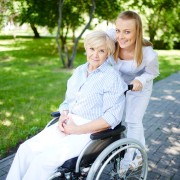April is Parkinson’s Awareness Month. So it is time to learn a few things about the disease.
NUMBER 1
“Parkinson’s disease is a chronic, degenerative neurological disorder that affects one in 100 people over age 60,” states the Michael J. Fox organization.
While the average age at onset is 60, people have been diagnosed as young as 18.
NUMBER 2
Testing for Parkinson’s disease is not definitive. This means the rate of misdiagnosis is relatively high, especially when the diagnosis is made by a non-specialist.
NUMBER 3
The number of people living with Parkinson’s disease (PD) varies. Recent research estimates that at least one million people in the United States have PD.
NUMBER 4
Currently research is showing that Parkinson’s can be genetically passed on or caused by environmental exposure to toxin(s). But there is no definitive proof.
NUMBER 5
The single biggest risk factor is getting older. We have heard it said, “You have to put up with the symptoms of aging if you are going to live a long life.”
Research continues to find associations, but not causation. For example: smoking; caffeine intake; pesticide exposure; and head injury have been found to be associated with PD.
As the symptoms increase, victims will need the help and support of family and friends. A comforting community like Kiva Assisted Living, can provide the social interaction every human needs while providing compassionate assistance with the tasks of daily living.
To learn more, visit the Michael J. Fox Foundation.









